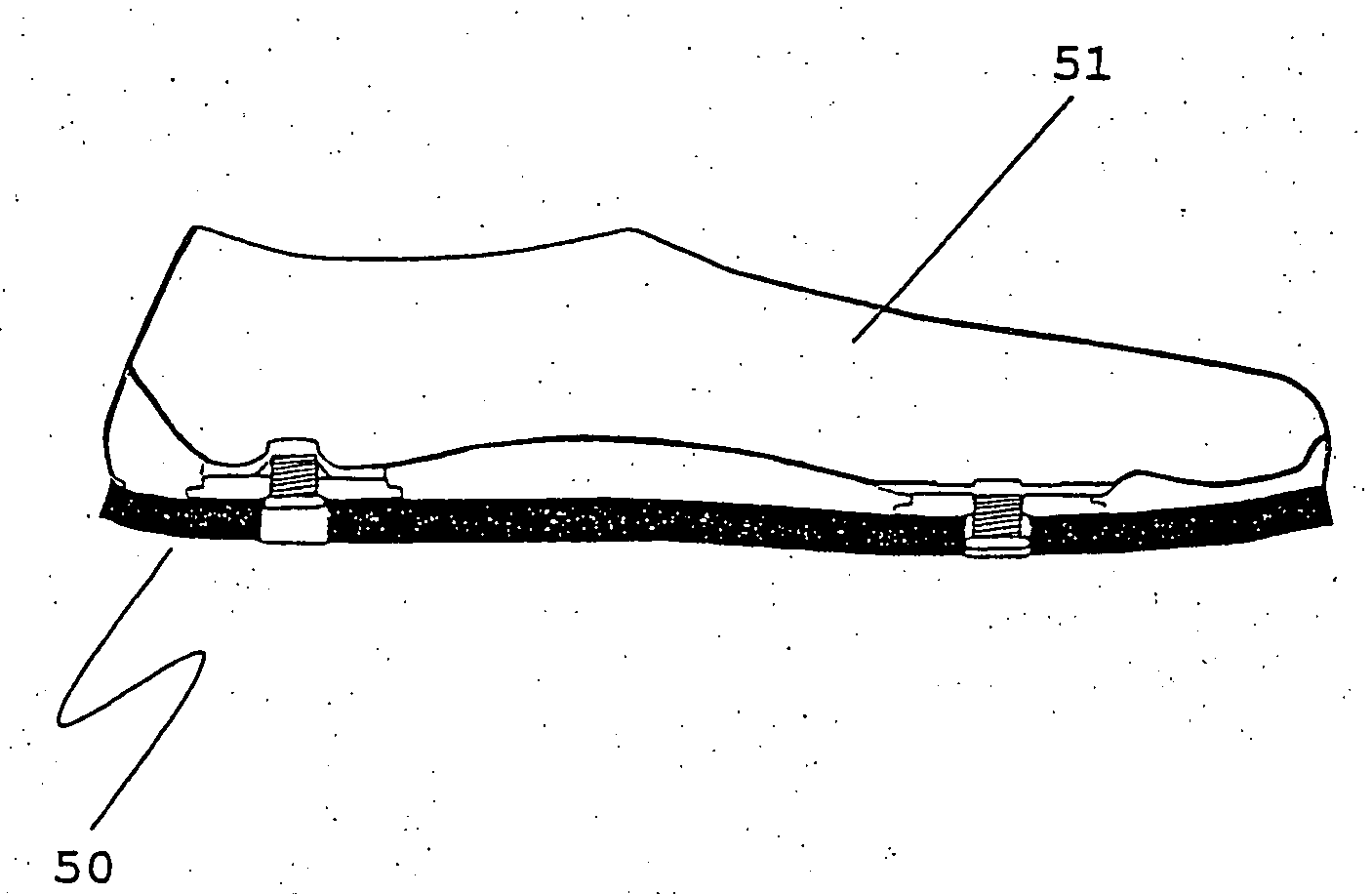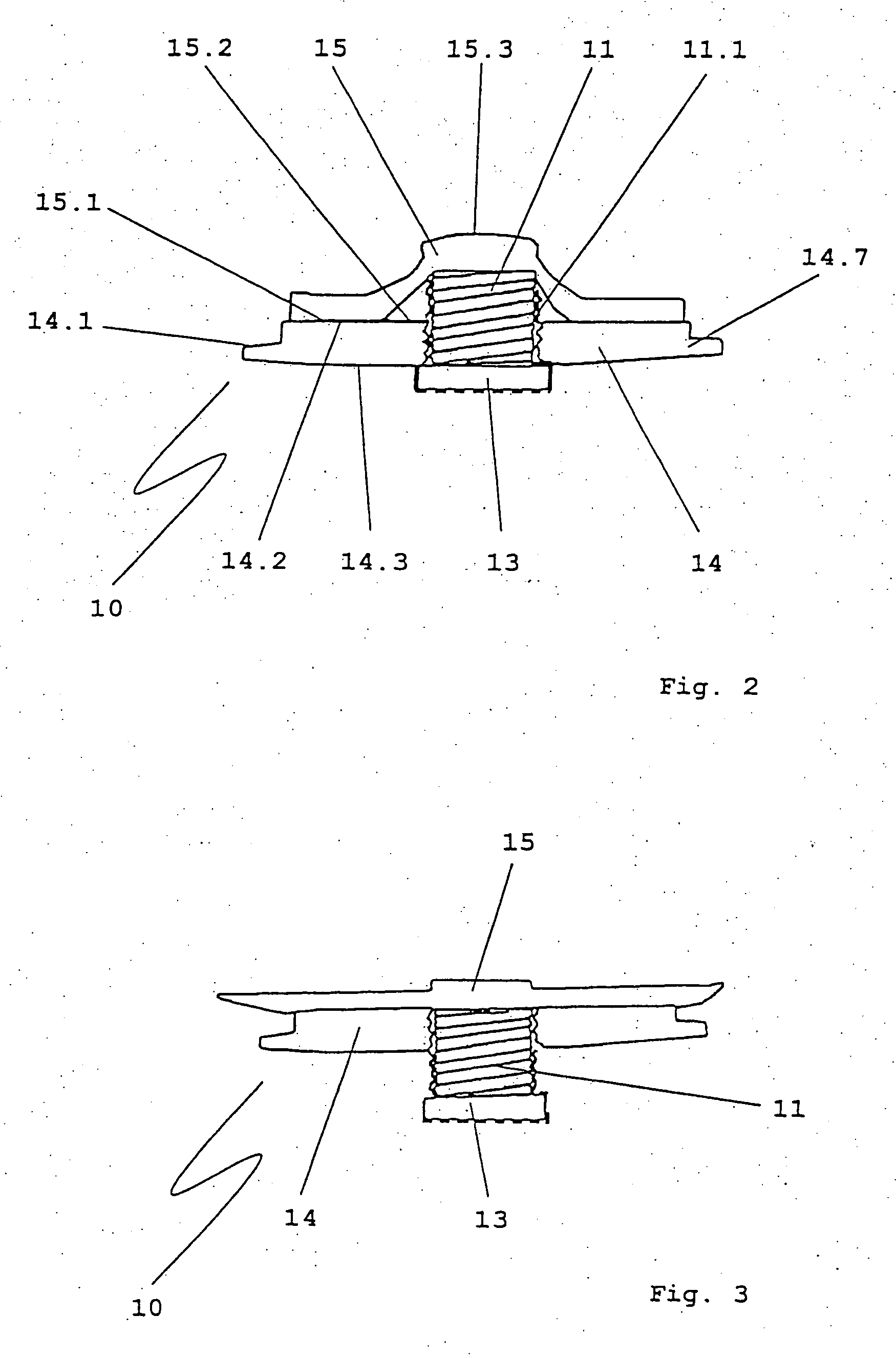Shoe Sole With Pressure Massage Function
a technology of pressure massage and shoe sole, which is applied in the field of shoe sole with pressure massage function, can solve the problems of undifferentiated massage, specific massage, and design, and achieve the effect of effectively cushioning the foot and increasing the wearing comfor
- Summary
- Abstract
- Description
- Claims
- Application Information
AI Technical Summary
Benefits of technology
Problems solved by technology
Method used
Image
Examples
Embodiment Construction
[0061]FIG. 1 shows a section through a shoe sole 1, which has an outsole 20 with apertures 21, a midsole 30 and an insole 40. The insole 40 is adapted in its shape to the midsole 30, which at the same time forms the foot bed 43. Provided in the midsole 30 is a recess, in which a pressure massage element 10 can be integrated. The pressure massage element 10 is connected via the receiving region 31 of the midsole 30 to the latter in the customary way. The pressure massage element 10 is covered over from below by the outsole 20 and is held by the latter. Apertures 41 are provided in the insole 40. These apertures 41 are closed from the side on which the pressure massage element 10 is located by a permanently elastic covering 15 of Sorbothane®. In the region of overlap 42 of the insole 40, the covering 15 of the pressure massage element 10 is covered over by the material of the insole 40. This provides additional cushioning of the foot in this region, both in the active position and in ...
PUM
 Login to View More
Login to View More Abstract
Description
Claims
Application Information
 Login to View More
Login to View More - R&D
- Intellectual Property
- Life Sciences
- Materials
- Tech Scout
- Unparalleled Data Quality
- Higher Quality Content
- 60% Fewer Hallucinations
Browse by: Latest US Patents, China's latest patents, Technical Efficacy Thesaurus, Application Domain, Technology Topic, Popular Technical Reports.
© 2025 PatSnap. All rights reserved.Legal|Privacy policy|Modern Slavery Act Transparency Statement|Sitemap|About US| Contact US: help@patsnap.com



